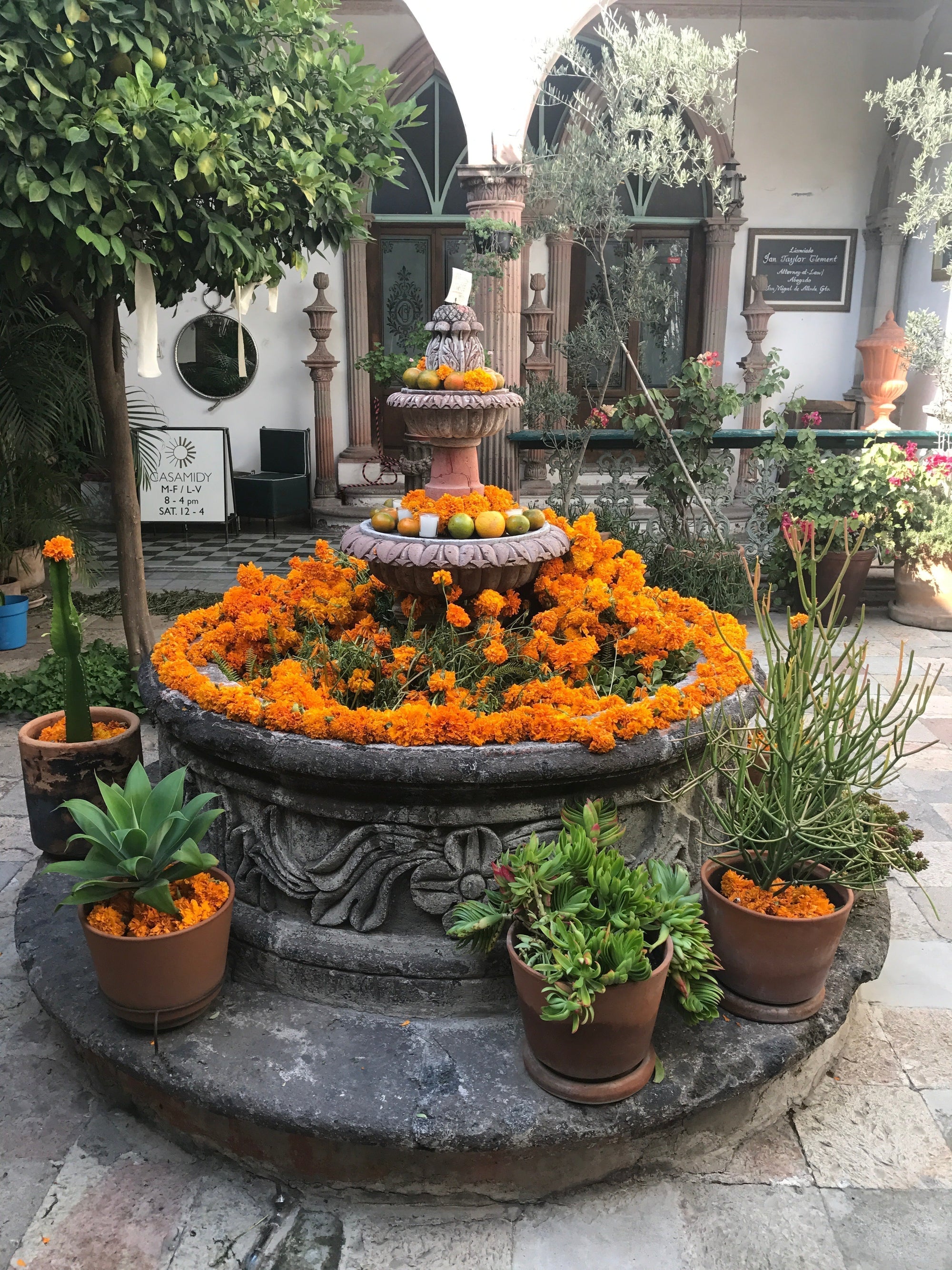As autumn approaches, San Miguel de Allende, brightens with marigolds, papel picado, music, and altars as locals and visitors come together to honor family members who have passed. Día de los Muertos is a creative and communal festival: a week of public altars, candlelit cemeteries, theatrical performances, and larger-than-life Catrina figures that celebrate life through remembrance and ritual.
Roots and meaning: where the festival comes from
Día de los Muertos is a tradition with deep pre-Hispanic roots and Catholic practices. Indigenous Mesoamerican peoples (including the Aztec and other civilizations) held rituals that honored the dead for millennia; after Spanish colonization these customs merged with Christian observances such as All Saints’ and All Souls’ Days, creating the modern holiday observed on October 31–November 2.

An altar in Oaxaca
How San Miguel does Día de los Muertos
San Miguel’s celebrations are a mixture of honor and celebration. Public ofrendas (altars) appear in plazas, galleries, and churches; families clean and decorate grave sites with cempasúchil (marigolds), candles, food, photos, and personal objects; and cultural institutions offer plays, concerts, dance and folkloric events. The city’s artistic community often contributes contemporary altar designs, sand-and-flower carpets (tapetes), giant papier-mâché sculptures, and a vivid parade of Catrinas — all of which turn the historic center into a colorful array of remembrance. You can expect to see a mix of community rituals (morning Masses or processions, cemetery vigils) and public arts programming in the evenings.
Why San Miguel’s celebration matters
San Miguel’s version of Día de los Muertos highlights how living communities adapt ancient rituals into modern public life: a family practice, a civic festival, and an artistic showcase. The city’s creative energy helps keep the tradition contemporary and visible while local families maintain the core purpose — to remember loved ones and to celebrate the continuity between life and death.




